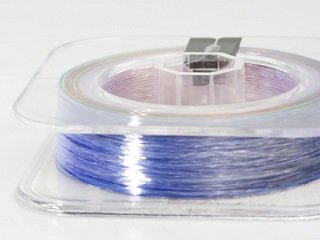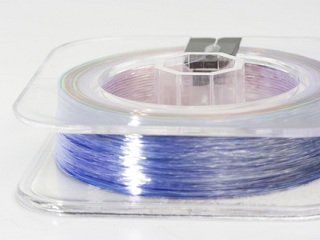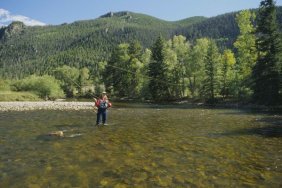 Last week I provided readers with a moderately brief list of common camping and hiking terms that I feel everyone should familiarize themselves with if they’re considering making the activities a normal part of their lives. I received a lot of positive feedback and today I wanted to do the same, only with fishing terms. Believe it or not, there are many anglers—beginning and experienced, alike—who don’t know what some of the common fishing terms mean. Below, you’ll find a list riddled with oft-used words that will have you sounding like a pro the next time you hit the water with your buddies.
Last week I provided readers with a moderately brief list of common camping and hiking terms that I feel everyone should familiarize themselves with if they’re considering making the activities a normal part of their lives. I received a lot of positive feedback and today I wanted to do the same, only with fishing terms. Believe it or not, there are many anglers—beginning and experienced, alike—who don’t know what some of the common fishing terms mean. Below, you’ll find a list riddled with oft-used words that will have you sounding like a pro the next time you hit the water with your buddies.
Action: Designation of rod flexibility OR the characteristics of lure movement during the retrieve.
Arbor: The inner most part of a reel’s spool (what you tie the line onto). A spool with a small diameter arbor holds more line than the same size spool with a larger diameter arbor.
Backing: Monofilament line tied directly to the spool, filled enough to cover the arbor, and then attached to braided line. Keeps slick braided line from slipping and fills the space left by the 125-yard braided line spools. Also, small diameter braided line loaded onto a fly reel underneath/behind the actual fly line. It serves to fill the reel and add line capacity when fighting long-running fish.
Backing Down: Driving the boat backwards (in reverse) while pursuing a fish.
Ball bearings: Small metal balls added to the mechanical mechanism of high-quality reels to make the retrieve smoother. Normally the more ball bearings a reel has the higher quality.
Beds: Circular areas in the lake bottom that bass clear out in which to lay their eggs during the spawn.
Brackish: Water that is mostly fresh, with some salt. The far ends of tidal creeks are mostly brackish, supporting sometimes fresh and saltwater fish.
Dredging: Retrieving a crankbait so that it digs or dredges up the bottom, which causes reflex strikes from fish.
Hump: Section of the lake bottom that rises vertically toward the surface, or is shallower than the area around it, such as a submerged island.
Line Memory: The characteristic of fishing line to have coils in it when it comes off the reel, due to being coiled up while on the spool of the reel.
Planer Board: Devices used in trolling to run lines out to lateral positions away from each side of the boat. Planers keep multiple trolling lines separated to avoid tangles and to cover a wider area.
Riffle: Where the current rolls over a rocky bar and then slows down.
Tailing: In shallow water, fish often reveal their location when they tip down to feed from the bottom and their tail breaks the surface. Redfish are famous for tailing.
Taper: The variation in diameter along the length of a fly line or fly leader. The line (rather than the lure) is what is actually cast in fly fishing, so the taper is an important factor in casting.
Walk-the-Dog: Retrieve method used for fishing topwater lures that is accomplished by twitching the rod tip downward several times. Used mostly with spook lures.
Weight-forward Fly Line: A fly line with the thickest diameter in the first 20 or 30 feet of the line to give it weight for casting.








